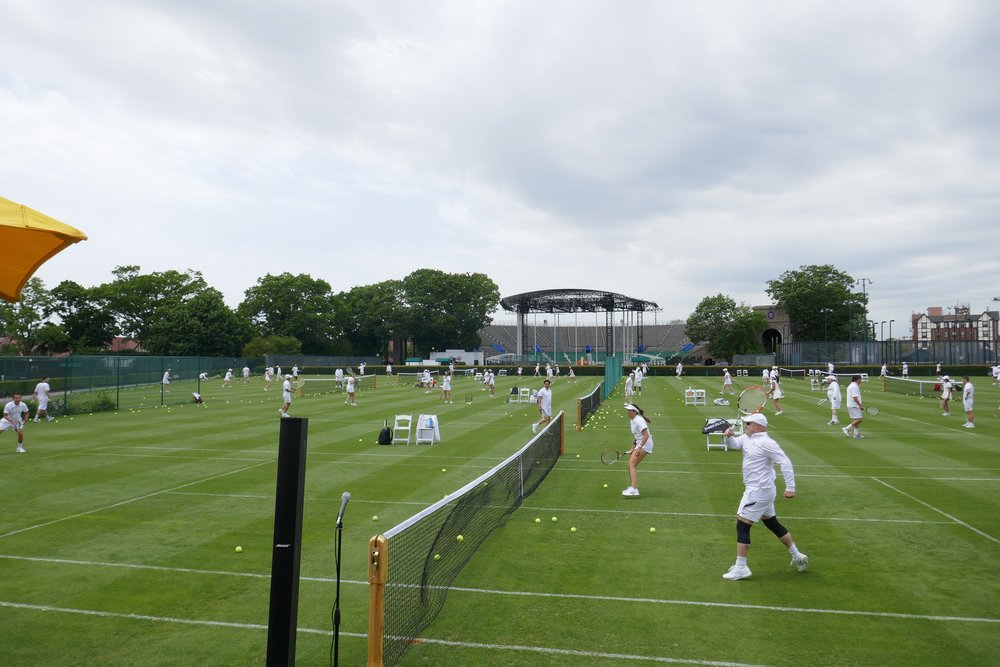Celebrity Walk, A Forest Hills Mystery Partially Solved
Since 2015, a dedicated group of preservationists have been searching for long-vanished cement slabs featuring the handprints, footprints, and autographs of tennis and music stars that were once part of Celebrity Walk.
Celebrity Walk was located in front of Forest Hills Inn in Station Square. Before being converted to a co-op, the inn was the center of a classy social life, and Celebrity Walk was the local version of the Hollywood Walk of Fame.
When searches of the tunnel-like Forest Hills Inn basement turned up no results and with no known photos, some people assumed it was just an urban legend.
But rumors circulated that a sidewalk reconstruction led to their relocation. Some people recalled seeing them placed in the inn’s basement in a potentially concealed tunnel for safekeeping, possibly in the late 1970’s.
After intense networking, over a year ago this columnist discovered five Celebrity Walk slabs in a garage at a home near Puritan Avenue and Greenway North. The slabs were left behind by a previous homeowner.
Last Friday, Forest Hills Stadium concert manager Mike Luba and Mitch Cohen, president of the Forest Hills Gardens Corporation, arrived at the home with a crew. They took the fragile concrete slabs to Forest Hills Stadium, where they will be restored and displayed.
The rescued slabs feature comedian Buddy Hackett, trumpeter Herb Alpert, actor Trini Lopez, director, Woody Allen, and Australian tennis player John Newcombe.
There are more slabs to be discovered, and the goal is to find the full collection. A few years ago, another homeowner donated a slab to the West Side Tennis Club featuring the signatures and handprints of tennis players Jack Kramer, Bill Talbert, and Manolo Santana.
“It’s a work in progress and I want to be part of it,” said crew member Wilson Brito. “We’ll get there. We’ll bring all the history back to where it belongs, and once we maintain that we can pass it on to the next generation and let them take care of it.”
Celebrity Walk originated in the mid-1960s and was the brainchild of Mark Fleischman, owner of the famed Studio 54 nightclub. From May 1965 to 1968, he also co-owned the 300-room Forest Hills Inn and adjoining apartments
“I loved coming up with press-generating ideas, including the creation of Celebrity Walk in front of the hotel’s sidewalk cafe,” he said. “Marketing seemed to come easily to me.”
At the time, the inn included cocktail lounges, a formal dining room known as the Windsor Room, sidewalk cafe, the Tea Garden, and four social rooms accommodating 400 guests.
“The Inn was a venerable hotel that looked like an English country manor,” said Fleischman. “It was a real coup when we got Frank Sinatra to put his handprints into a block of wet cement when he headlined the Forest Hills Music Festival at the nearby tennis stadium.
“As soon as other celebrities heard about Sinatra’s handprints and signature, they agreed to be included in our Celebrity Walk when they performed,” he added.
“The Forest Hills Inn has Frank Sinatra’s and Barbra Streisand’s handprints imbedded on their sidewalk pavement, but it had to get them the hard way,” read an article from 1965 in the Long Island Star-Journal. “Both stars agreed to make the imprint, but refused to do it at the sidewalk. So wet cement was sent to both stars, the imprints made, and the hardened blocks were then inserted in the pavement.”
West Side Tennis Club is always looking for items from the club’s long and storied history.
“These past few years, some wonderful items have been donated to the club, both solicited and unsolicited,” read a statement from the club.
If you have historic WSTC/Forest Hills items, email archives@thewestsidetennisclub.com.





